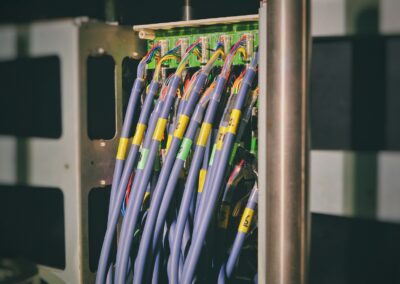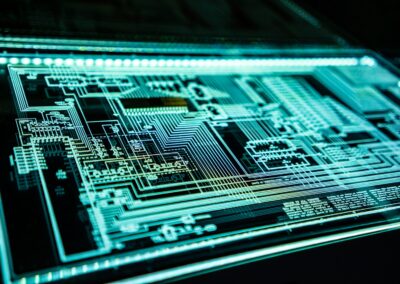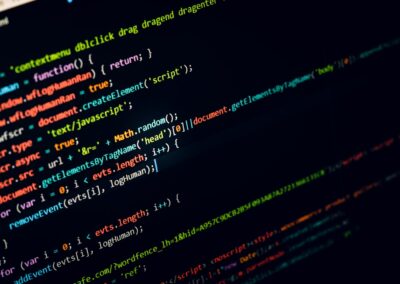Understanding the Importance of Differential Privacy in IoT
Why Differential Privacy is Essential for IoT Data Security
Applying differential privacy techniques in IoT environments is crucial for protecting against re-identification attacks, which pose significant risks to user privacy and data security. As the use of IoT devices continues to expand across regions like Saudi Arabia and the UAE, ensuring that sensitive data is securely anonymized is becoming increasingly important. Differential privacy offers a robust framework for safeguarding personal information, making it a vital tool for businesses that rely on IoT technology.
IoT devices generate vast amounts of data, often including personal and sensitive information that can be vulnerable to re-identification if not properly protected. Re-identification attacks occur when anonymized data is cross-referenced with other data sets, allowing malicious actors to infer the identity of individuals. This threat is particularly concerning in environments like smart cities in Riyadh and Dubai, where IoT devices are integral to public services and infrastructure. By implementing differential privacy techniques, businesses can mitigate the risk of re-identification, ensuring that user data remains confidential and secure.
Moreover, differential privacy enhances compliance with data protection regulations and industry standards. In regions such as the UAE, where data privacy is a growing concern, adopting differential privacy can help businesses meet legal requirements and build trust with customers. This proactive approach not only protects individuals’ privacy but also strengthens the organization’s reputation, positioning it as a leader in IoT security and privacy.
The Key Principles of Differential Privacy in IoT
To effectively implement differential privacy techniques in IoT environments, it is essential to understand the key principles that underpin this approach. The first principle is the introduction of controlled noise into data sets. This process involves adding random noise to data in a way that masks individual entries while preserving the overall utility of the data. This technique is particularly useful in IoT environments, where data analysis is crucial for decision-making but must not compromise user privacy.
Another fundamental principle of differential privacy is ensuring that the privacy of individuals is maintained regardless of the presence or absence of their data in the dataset. This concept, known as “privacy guarantees,” ensures that the inclusion or exclusion of an individual’s data does not significantly affect the outcome of any analysis, thus protecting against re-identification. In regions like Riyadh and Dubai, where large-scale IoT deployments are common, this principle is essential for maintaining trust and security across diverse and interconnected systems.
Additionally, differential privacy emphasizes the importance of scalability and adaptability. IoT environments are dynamic, with data being collected from a wide range of devices and sources. Differential privacy techniques must be scalable to handle large volumes of data and adaptable to different types of IoT systems. By implementing flexible and scalable privacy solutions, businesses in Saudi Arabia and the UAE can ensure that their IoT networks remain secure as they continue to grow and evolve.
Implementing Differential Privacy Techniques in IoT Systems
Steps to Successfully Apply Differential Privacy in IoT
Successfully applying differential privacy techniques in IoT environments requires a strategic approach that includes several key steps. The first step is to conduct a comprehensive assessment of the data being collected by IoT devices. This involves identifying the types of data that are most sensitive and determining the level of privacy protection required. By understanding the nature of the data, businesses can tailor their differential privacy techniques to meet specific needs and ensure that all sensitive information is adequately protected.
The next step is to implement the chosen differential privacy techniques within the IoT network. This process typically involves integrating privacy-preserving algorithms into data collection and analysis processes. For example, adding noise to data before it is stored or analyzed can prevent re-identification while still allowing for meaningful insights. In regions like the UAE and Saudi Arabia, where IoT systems are integral to various industries, it is crucial to ensure that these privacy techniques are seamlessly integrated without disrupting the functionality of the IoT devices or the quality of the data.
Training and communication are also essential components of successful differential privacy implementation. Employees and other stakeholders must be educated on the importance of privacy and how differential privacy techniques work. This includes providing clear guidelines on how to handle data and ensuring that all users are aware of the privacy measures in place. In environments like Riyadh and Dubai, where IoT systems are used in critical infrastructure, such as healthcare and transportation, comprehensive training programs are vital for ensuring that privacy protocols are followed and maintained.
Overcoming Challenges in Implementing Differential Privacy
While applying differential privacy techniques in IoT environments offers significant benefits, it also presents certain challenges that businesses must address. One of the primary challenges is balancing privacy with data utility. Introducing too much noise can degrade the quality of the data, making it less useful for analysis and decision-making. To overcome this, businesses should work with data scientists and privacy experts to find the right balance between privacy and utility, ensuring that the data remains valuable while still protecting individual privacy.
Another challenge is the computational complexity associated with differential privacy. Implementing these techniques can require significant computational resources, particularly in large-scale IoT environments. To address this, businesses should invest in scalable and efficient privacy-preserving algorithms that can handle the demands of their IoT systems. In regions like Saudi Arabia and the UAE, where technology infrastructure is rapidly advancing, leveraging the latest in computational technologies can help overcome these challenges and ensure effective privacy protection.
Finally, maintaining ongoing privacy protection in dynamic IoT environments is an ongoing challenge. As IoT networks evolve and new devices are added, businesses must continuously update their privacy protocols to address new threats and vulnerabilities. This requires a proactive approach to privacy management, including regular audits, updates, and the adoption of emerging privacy-preserving technologies. By staying ahead of these challenges, businesses can ensure that their IoT networks remain secure and that user privacy is consistently protected.
Conclusion
In conclusion, applying differential privacy techniques in IoT environments is essential for protecting against re-identification attacks and ensuring the privacy of user data. By understanding and implementing the key principles of differential privacy, such as controlled noise introduction and privacy guarantees, businesses can effectively safeguard sensitive information in increasingly complex IoT networks. Successful implementation involves a strategic approach that includes comprehensive data assessment, seamless integration of privacy techniques, and ongoing training and communication. While challenges such as balancing privacy with data utility and managing computational complexity must be addressed, the benefits of robust privacy protection far outweigh the obstacles. For businesses in Saudi Arabia, the UAE, and beyond, investing in differential privacy is a crucial step in securing IoT networks and ensuring long-term success in the digital age.
—
#IoTSecurity, #DifferentialPrivacy, #PrivacyProtection, #ReIdentificationAttacks, #IoTDataSecurity, #ModernTechnology, #BusinessSuccess, #LeadershipInTechnology, #ProjectManagementInIoT































